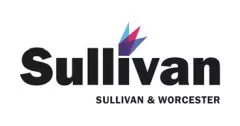A "litigation hold plan" guides an organization in carrying out its evidence preservation obligations. Many factors come into play when the need to preserve records is triggered, and each organization has unique systems, policies, and practices. There is no one-size-fits-all plan, but there are important considerations that should be addressed.
In our first post in this series, we discussed events that can trigger a litigation hold and policies to have in place before you are faced with a legal hold. In this post, we provide more details on how to use your litigation hold policy to implement a litigation hold plan when you are hit with a hold.
1. Identification of Key Players, Departments, and Data Sources (All vs. Targeted)
The plan should address the need to consider the scope of the preservation. In some cases it may be necessary to implement a company-wide preservation, while in other cases it makes more sense to target only key individuals or departments. While this decision will likely be driven by the scope of the lawsuit at issue, that is not the only factor. For example, making sure the scope is no broader than necessary will help maintain the attorney-client privilege and work product protection with respect to the hold notice and related documents.
Our second post in this series provides further details on how to inform key employees on how to preserve documents.
2. Interviewing Key Individuals
The plan should emphasize the benefits of identifying key individuals and arranging personal meetings with them. Face-to-face meetings with individuals likely to possess the most sensitive or largest amounts of information can be tremendously beneficial in terms of learning what the company knows and where relevant records are likely to be found. Not every potential custodian needs to be personally interviewed; those who play a less significant role can usually describe their knowledge and preservation practices via a questionnaire or survey.
3. Prioritization of Tasks
It may be useful to prioritize the tasks that ought to be accomplished first and foremost. For example, email is typically the most important source for preservation. One should not wait to preserve email of key employees while determining what other sources of information should also be preserved. A delay could result in the inadvertent loss of emails or other data.
Creating a data map can help you identify and prioritize preserving information. Our third sample litigation hold data map.
4. Accessible vs. Inaccessible information
The plan should reflect the need to strike a balance when it comes to information sources that are not easily accessible. Common types of generally inaccessible information are backup tapes and legacy systems. For backup tapes, provided the tapes are not the sole source of information, it may be cost prohibitive to restore, search, and extract information from those sources. The same can be said with respect to legacy systems, which are the old, obsolete systems or files that are retained but no longer in use. The cost to restore and analyze this data may be cost prohibitive, particularly where the data has already been migrated to a newer system that is currently in use. The primary goal is to create a prudent and responsible plan to preserve all relevant records.
5. Duplicate Sources
The plan should address the scenario where identical information is found in two or more locations. When data is truly duplicative, preserving it in multiple locations may not be necessary. The key is to make sure it is a true duplication and then securely preserve it in at least one location.
6. Preservation in Place vs. Preservation by Collection
The plan should discuss the difference between preserving records in the location where they are kept (in the ordinary course of business) and collecting all of the records in a single location. For electronic records, some IT systems allow for a "lock down" such that data cannot be deleted, overwritten, modified or altered in any way. This may also be the case with email journaling or archiving systems. Absent a lock down feature, it may be more prudent to collect the data in a single location, but be mindful that moving electronic records may alter their metadata.
7. Forensic Collection vs. Active File Collection
The plan should explain the potential need for a forensic investigator to collect a byte-by-byte copy of a computer device. As an example, this might be necessary in a lawsuit involving allegations of trade secrets or other confidential information being downloaded and/or transmitted. A forensic investigator would examine the unused or deleted slack space on a computer's hard drive, and also the computer's system files to see what data was copied and what Internet sites were visited. Naturally, a forensic investigator is not necessary in every case. In most situations, an active file collection – where only the active, non-deleted files on a computer (or in a targeted location on a computer) are securely copied – will be sufficient.
8. Utilization of Third-Party Service Providers
When implementing a preservation plan, it is important to be mindful of the IT department's capabilities, resources, and limitations. It may be prudent to enlist the help of outside service providers. The plan should highlight the need to consider this issue in the context of each case.
9. Cost and Time Analysis
What is the cost associated with preservation? Will there be business interruption, IT impact, added storage requirements, and associated costs or risks with retaining information beyond its normal life cycle? Examining these issues is important when considering the scope and reasonableness of the preservation.
10. Departed (or Departing) Employees
The plan should address specifically what the company generally does with data when employees leave the company. Just because a custodian is no longer with the company does not necessarily mean that their records (such as email files) no longer exist. If a departed employee's data does exist at the time a litigation hold obligation is triggered, then it must be retained. It is important that the company's legal advisors and IT personnel be on the same page concerning what records need to be retained and for how long.
While you cannot anticipate all events that may trigger a legal hold, understanding the elements of a Litigation Hold Plan and having a Litigation Hold Policy in place at your company will help you implement a hold more quickly and efficiently.
The content of this article is intended to provide a general guide to the subject matter. Specialist advice should be sought about your specific circumstances.



